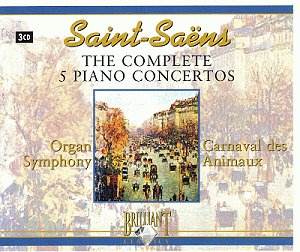 Composer: Charles-Auguste de Bériot
Composer: Charles-Auguste de Bériot
Works: Concerto No. 1 in D Major, Op. 16; Concerto No. 8 in D Major, Op. 99; Concerto No. 9 in A Minor, Op. 104
Performers: Takako Nishizaki (violin), RTBF Orchestra/Alfred Walter
Recording: Maison de la Radio, Brussels, 1986
Label: NAXOS
Charles-Auguste de Bériot, a pivotal figure in the development of the Franco-Belgian violin school, occupies a somewhat neglected position in the annals of Romantic violin music. His concertos, particularly the three featured on this recording, showcase not only his technical prowess as a virtuoso but also his melodic sensibility that draws heavily on the operatic traditions of his time. Bériot’s works, while perhaps less frequently programmed than those of his contemporaries such as Mendelssohn or Tchaikovsky, reveal a distinctive voice characterized by lyrical expressiveness and virtuosic flair.
Takako Nishizaki’s performance as the soloist is a demonstration of technical mastery and interpretative insight. The Concerto No. 1 in D Major opens with an Allegro moderato that immediately captivates with its blend of bravura and lyricism. Nishizaki’s use of left-hand pizzicato, a hallmark of Bériot’s early style influenced by Paganini, is executed with precision and flair, allowing the melodic lines to sing amidst the dazzling technical demands. The orchestral accompaniment under Alfred Walter is both supportive and nuanced, creating an engaging dialogue between soloist and ensemble.
Bériot’s Concerto No. 8 in D Major, composed later in his career, reflects a more mature compositional style, with an emphasis on melodic decoration and a sophisticated interplay of orchestral textures. The Andantino offers a poignant contrast to the spirited Allegro maestoso that precedes it, showcasing Nishizaki’s ability to convey a wide emotional range. Here, her phrasing is particularly noteworthy, as she navigates the lyrical passages with a delicate touch that enhances the operatic quality inherent in Bériot’s writing.
The final work, Concerto No. 9 in A Minor, continues this trajectory with an elegant three-movement structure that unfolds seamlessly. The Allegro maestoso is marked by its rhythmic vitality, and Nishizaki’s interpretation brings forth a sense of excitement that is palpable. The Rondo: Allegretto moderato serves as a fitting conclusion, with its playful motifs interspersed with lyrical reflections, expertly handled by both the soloist and the orchestra. Walter’s conducting is characterized by a careful balance between energy and sensitivity, ensuring that Bériot’s intricate orchestration shines through without overshadowing the violin.
The recording quality further enhances the listening experience, with a well-balanced sound that places Nishizaki’s violin prominently while allowing the orchestra to provide a rich, warm backdrop. The engineering captures the nuances of both the solo and ensemble playing, creating an immersive auditory experience that invites repeated listens.
Bériot’s concertos, while not as frequently performed as those of his more celebrated contemporaries, reveal a treasure trove of melodic and technical innovation that deserves a place in the concert repertoire. This recording serves as a compelling introduction to his work, brought to life through Nishizaki’s skilled interpretation and the RTBF Orchestra’s vibrant playing. Such performances not only highlight Bériot’s contributions to violin literature but also reaffirm the significance of his stylistic legacy within the broader context of 19th-century music. The overall impression is one of rediscovery—a reminder of the richness that exists beyond the well-trodden paths of the violin repertoire.



